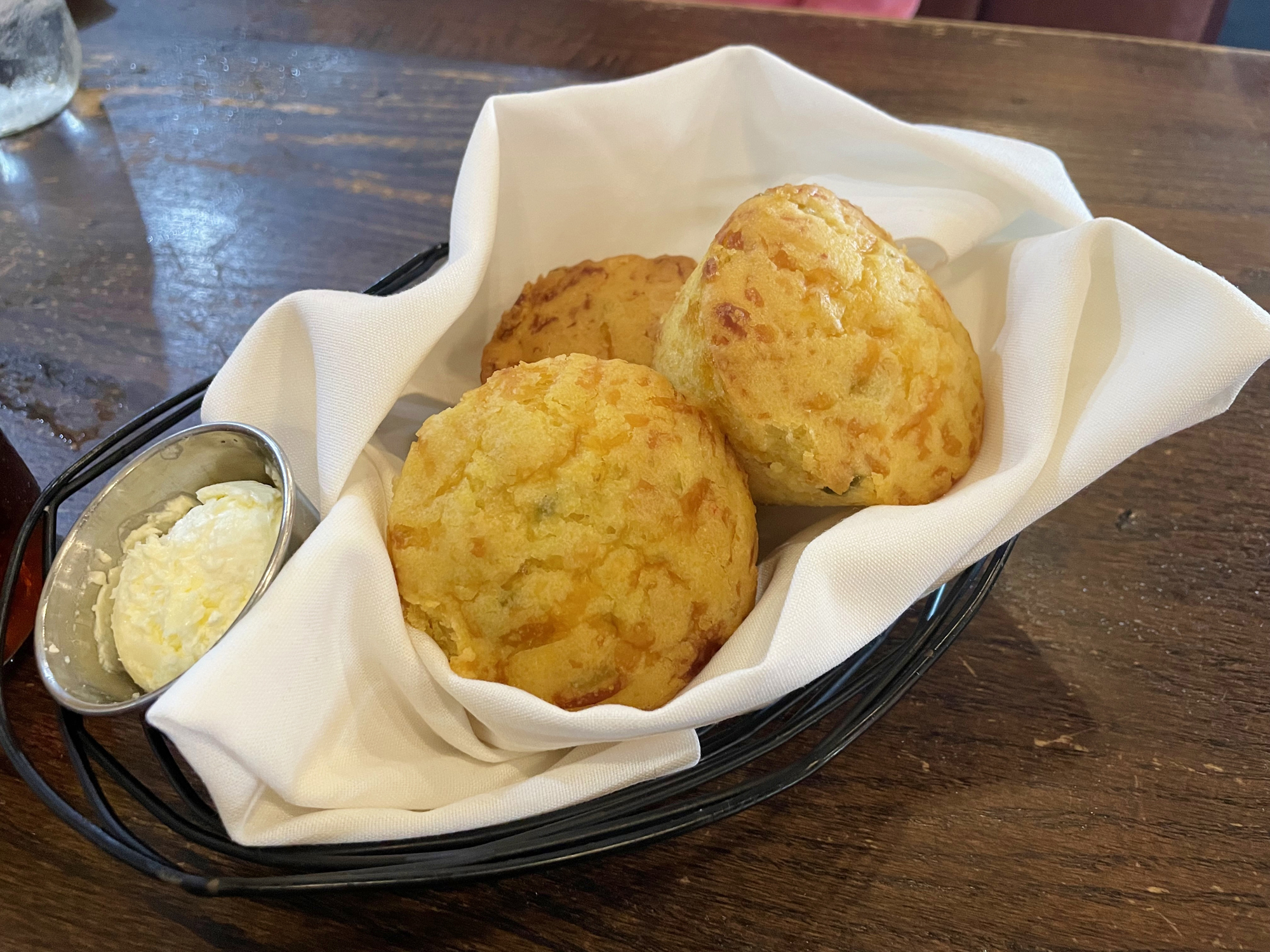+++++++++++++++++++++++++++++++++++++
About the Recipe: So easy; so simple! You will even stop buying the biscuits in a tube when you taste how delicious they are. They are crisp yet soft and full of butter flavor. Yummy!
Welcome to; Biscuits from “Beard on Bread” 1973 Cookbook
Recipe by: His original recipe made 12 biscuits. He shared this story. “We had a reputation at home for very special biscuits, which were made by our Chinese cook, who was with us for many years. After he left us, they became a standard item in our household, and I still make them very often. The secret of their unique quality is this. They use heavy cream instead of butter or shortening.”
How Biscuits Become an American Classic
European Colonists biscuits were dense and flavorless since they were unleavened. Southern cooks beat the dough by hand to introduce some air into the dough. Enslaved women, who worked in Southern kitchens usually had this job. Most biscuits were cracker-like in the North. When leavening became available, biscuits again became popular using regional flour as grown. Northerners believed eating cooled bread was better for digestion, while the Southerners loved warm bread. In those early years, black cooks and Pullman Porters shared their knowledge of combining dry ingredients and then adding water to make biscuits quickly. In about 1933. Lively Willoughby patented refrigerated biscuit dough in a tube and oven-ready biscuits arrived on the scene. Northern cooks discovered that they could easily produce biscuits too. Restaurants started selling biscuit sandwiches in the 1970s. Biscuits grew with America as innovation with the wider and more inexpensive distribution of flour and leavening ingredients improved. There were easy drop biscuits, fluffy biscuits, buttermilk biscuits, and flavored biscuits. Today, biscuits are found in the refrigerated section of every grocery store, on menus, gas stations, and bakeries. Biscuits are truly a bite of American history.
For More Information See: https://www.kingarthurbaking.com/blog/2023/01/30/history-of-american-biscuits
Enjoy the Story: “Why Can’t I Make Fluffy Soft Biscuits?”
On the breakfast serving plate were custardy soft scrambled eggs aside crispy smoked bacon, filling the room with mouth-watering scents. Everything was perfect for our anniversary breakfast feast. There was only one problem, my from-scratch hot biscuits were a little flat with only a hint of height, promising a dense texture. I tried to make biscuits many times, but somehow, they never turned out.
Our vacation trip to Alabama was planned for next week, and I would plead my case with Prudence, an expert in Southern cooking, known for her fantastic, light fluffy biscuits. My quick note-taking lesson with Prudence and kitchen-tasting her soft, tender breakfast biscuits boosted my confidence. When I returned to my home kitchen again, I followed all of her detailed directions exactly.
Of course, it didn’t work. I shook my head and questioned, “Why can’t I make fluffy soft biscuits? The next week, Prudence traveled to my Northern kitchen, where I had out all my biscuit ingredients. She carefully demonstrated all the biscuit making steps to me again. Guess what? Prudence’s biscuits were just as flat as mine. She looked at my ingredients and said “Wait a minute! You used your Northern grown flour, and I used my Southern flour. That was it! That afternoon, I learned that I could make tall, flaky biscuits if I just used Southern grown flour. Case solved! Hard wheat flour has twice as much protein as soft wheat flour, and it’s that gluten that makes a chewier biscuit. So, if you want to make tender soft biscuits, do yourself a favor and order yourself some Southern White Lily Flour. Then, you won’t be asking, “Why can’t I make fluffy soft biscuits?”
Now You Know the Rest of the Story
pdf for Copy of Recipe – James Beard’s Biscuits
+++++++++++++++++++++++++++++++++++++
‘
![]()



